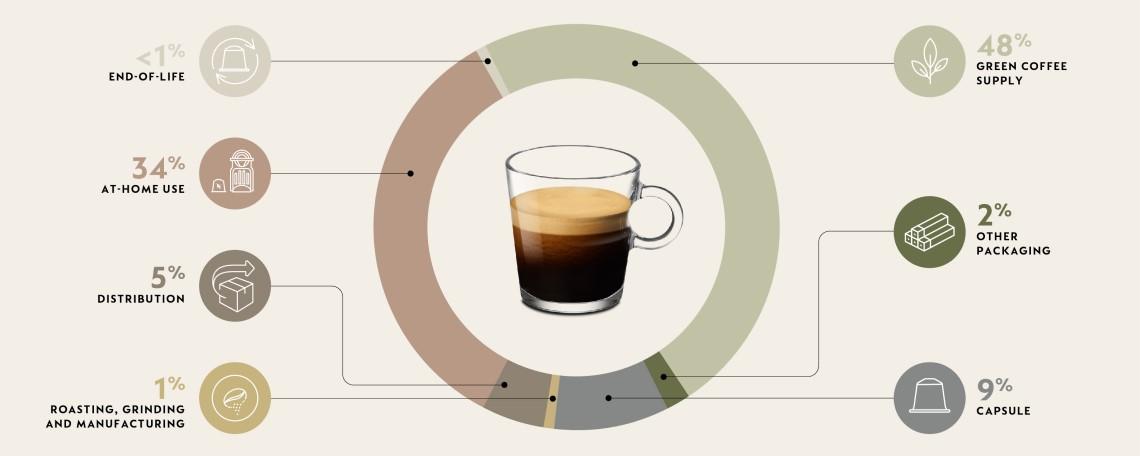At Nespresso, our commitment to quality goes beyond exceptional taste. It drives us to challenge every decision and action throughout the entire coffee journey. To gain a deeper understanding of this, we engaged Quantis to conduct a comprehensive Life Cycle Assessment (LCA) to understand its environmental impact. This assessment covers the entire lifecycle of a cup of coffee, from the supply of green coffee to brewing at home until the end-of-life of the coffee capsule and the washing of the cup.
The study's findings revealed that the actual cultivation of the coffee beans in the sourcing regions accounts for nearly half of the total carbon footprint of a cup of coffee. This trend was consistent across other popular brewing methods tested in the study. With approximately 400 billion cups of coffee consumed globally each year, this is a significant finding.
Coffee-growing regions are particularly vulnerable to the adverse effects of climate change. That’s why we have a strong responsibility to protect the future of coffee and the communities that depend on it, while simultaneously reducing its impact on the environment.
By 2030, Nespresso aims to cut its GHG emissions by 50%. A key enabler to reach the targets is to collaborate with the over 150,000 coffee farmers we source from to accelerate the transition to a low carbon coffee farming, scaling the implementation of regenerative agriculture that not only improves soil health and fertility but also helps captures carbon in soils and plant biomass.
The Nespresso system enables the use of just the right amount of roast and ground coffee, energy and water per cup. This explains why the LCA also highlights that a cup of lungo coffee brewed with the Nespresso Original system has a 24% lower carbon footprint than a bean-to-cup (Full Automat).
In the spirit of transparency and open dialogue, we invite experts to delve deeper into the data of coffee brewing posted on our website https://nestle-nespresso.com/sites/site.prod.nestle-nespresso.com/files/LCA_raw_data_Comparative_overview_110ml_Europe_2024.pdf. Additionally, there is also a simpler infographic explaining the study's findings for further insight https://nestle-nespresso.com/sites/site.prod.nestle-nespresso.com/files/NN_EUR_LCA_Infographic.pdf

